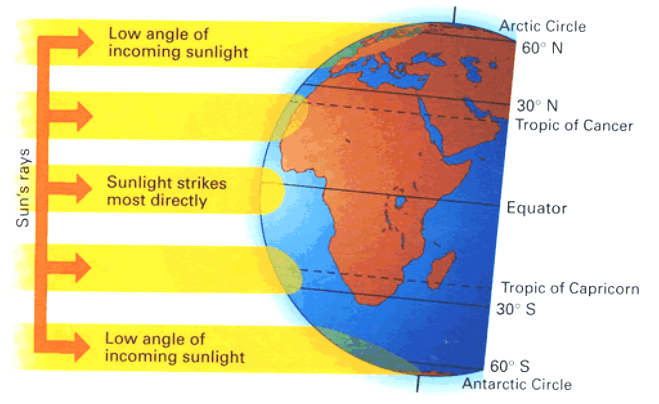Chapter 3 - The Biosphere
Ecology
- the study of the relationships between organisms and the environment
Biosphere - all the parts of earth where life exists.
Population - allmembers of a species living in an area
Community - all the populations in an area
Ecosystem - living and non living factors
Biome - large ares with certain climates (and plants and animals)
Ecologists and Field Biology
- attempt to solve real-world problems related to the environment
- effects of forest fire
- number and location of whales
- reason for frog deaths in a pond
- how pesticides affect bees
Gathering Ecological Data
- Observations - gathering data on types of butterflies in a field
- Experimentation - determing how butterflies respond to pesticides
- Modeling - using data, such as graphs to discover trends
Ecology in the Field (Field Biology)
Analyzing Patterns in a Savanna Landscape ( 8 min video) with Student Worksheet
How do termites contribute to the resilience of the ecosystem?

Factors that Affect Organisms
Biotic factors - living things (predators, prey, parasites)
Abiotic factors - nonliving things (temperature, soil, humidity)
Modeling Global Systems
- atmosphere
- biosphere
- hydrosphere
- geosphere
Climate and Weather
Weather - day to day conditions at a particular time and place
Climage - average, year-after-year conditions in a region
Three main climate zones
- Polar (cold areas)
- Temperate (hot/cold seasons)
- Tropical (always warm)
Biomes
Greenhouse effect - solar energy hits the earth and is trapped by greenhouse gasses (carbon dioxide, water, methane)
Why do we have seasons?
The eart tilts on its axis as it revolves around the sun. In summer months, the northern hemisphere receives more direct rays (warmer). In the winter, the northern hemisphere is tilted away from the sun, less direct rays means cooler temperatures.

Biomes - environments are grouped into areas that have similar climate and communities
- biomes have unique characteristics and plants and animals
- Tropical rainforest
- Savanna
- Desert
- Temperate grassland
- Chaparral
- Temperate deciduous forest
- Boreal forest (taiga)
- Tundra
- Polar
Marine Ecosystems (oceans and seas)
Freshwater Ecosystems (lakes, rivers, streams, wetlands)
Estuary - where freshwater meets sea
Classroom Activities and Resources
Analyzing Climatographs (Key, TpT)